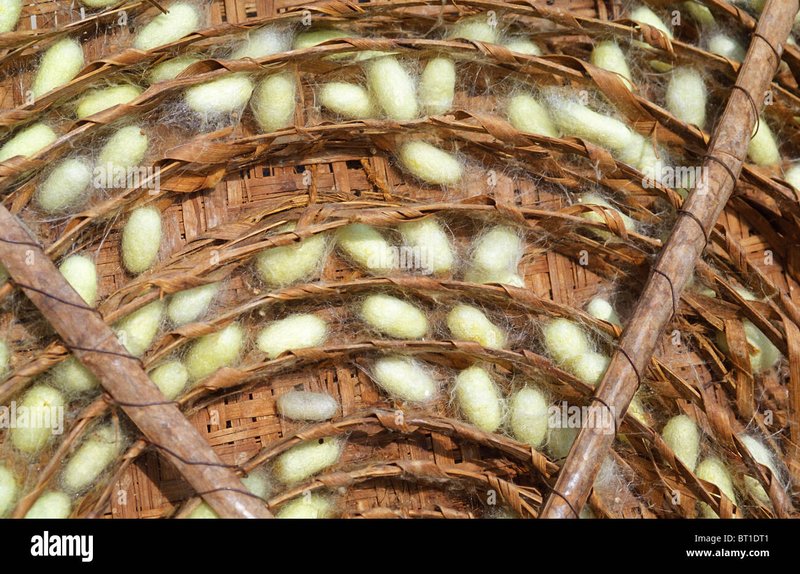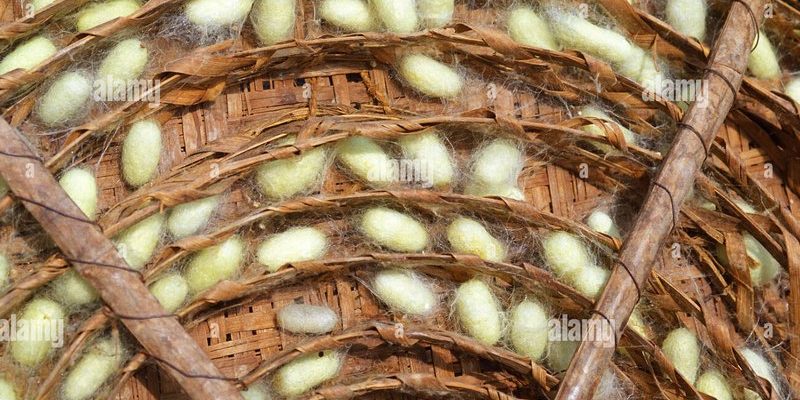
Silk comes from the cocoons of silkworms, which are actually the larvae of the silk moth. The process of harvesting silk is quite intricate and requires care at every step. So, just how many silkworms does it take to produce one gram of silk? Spoiler alert: it’s a bit more than you might think! Let’s break it down, step by step.
Understanding Silkworms and Their Role in Silk Production
Silkworms are not your garden-variety worms. These little critters are the larvae of the *Bombyx mori* moth, and they’ve been domesticated for thousands of years. They’re incredibly specialized for silk production, needing specific types of leaves, mainly mulberry, to grow and thrive. One silkworm can spin a cocoon that creates about 1,000 to 3,000 meters of thread! That’s quite a feat!
What’s even more interesting is the life cycle of silkworms. They start as eggs and then grow through several stages called instars. Throughout their growth, they munch on leaves, growing rapidly until they’re ready to spin. Once they reach maturity, they produce silk threads as they form their cocoons—a sticky, protein-rich material that protects them during their pupal stage.
So, how many silkworms are needed for one gram of silk? It’s estimated that around 2,500 to 3,000 silkworms are required to produce just one gram of silk! That’s a massive number for such a small amount, highlighting the resource-intensive nature of silk production.
The Silk Spinning Process
The process of spinning silk is quite mesmerizing. When a silkworm is ready, it secretes a liquid protein from specialized glands, which then hardens to form silk. This process can take about 2-3 days, and during this time, the silkworm can spin up to 1,000 meters of silk thread.
Once the cocoon is formed, it’s harvested. It’s essential to do this at the right time so that the silkworm doesn’t emerge as a moth, which would break the silk threads. That’s why many silk producers heat the cocoons to *kill the pupae*, preserving the integrity of the silk. After harvesting, the cocoons are boiled or steamed to loosen the silk fibers.
Here’s a quick breakdown of the spinning process:
- Silkworms feed and grow.
- They spin cocoons over 2-3 days.
- Cocoons are harvested before the moths emerge.
- The silk is then collected and processed.
This intricate process makes silk not just a material, but a testament to the hard work of countless silkworms.
The Value of Silk
Silk is often considered one of the most luxurious fabrics in the world. Its softness, sheen, and durability make it highly sought after for clothing, bedding, and even artwork! But with all that labor, the question remains: why is silk so valued?
Firstly, the sheer amount of work involved in harvesting silk makes it a luxury item. Each gram represents the effort of thousands of silkworms, and that exclusivity comes at a cost. Additionally, silk’s natural properties, such as breathability and insulation, make it ideal for various climates. So, it’s not just pretty—silk serves a purpose!
Moreover, the environmental impact of silk farming is often less than that of synthetic alternatives, which can be polluting. Many consumers today appreciate the sustainability of natural materials, making silk even more appealing.
Comparing Silk to Other Fabrics
When comparing silk to other fabrics like cotton or polyester, you’ll notice a distinct difference in production. Cotton, for example, requires a much larger area for farming and utilizes a significant amount of water and pesticides. Polyester, on the other hand, is derived from petroleum, which comes with its own set of environmental issues.
Here’s a quick comparison:
- Silk: Labor-intensive, luxurious, natural.
- Cotton: Widely available, requires water and chemicals.
- Polyester: Durable but environmentally harmful.
As you can see, silk stands out not only for its beauty but also for its thoughtful production methods compared to other common fabrics.
The Global Impact of Silk Production
Silk production, or sericulture, has a rich history and significantly impacts economies across the globe, primarily in countries like China, India, and Thailand. These nations have established their cultural and economic identity around silk, with many rural communities relying on sericulture as a source of income.
In these areas, silk farming provides jobs and sustains traditional practices that have been passed down through generations. It also encourages local biodiversity, as farmers often grow mulberry trees alongside other crops to support their silkworms.
However, this industry is not without challenges. Issues such as climate change and the increased demand for sustainable practices put pressure on silk producers. Balancing economic needs with environmental concerns is crucial for the future of silk.
How Silk Is Used Today
Today, silk is used in various products beyond just clothing. From luxurious bedding to stylish accessories, silk remains a popular choice for many. You might find silk used in:
- Fashion garments: Dresses, ties, and scarves.
- Bedding: Sheets and pillowcases.
- Home décor: Cushions and curtains.
- Art: Silk paintings and crafts.
The versatility of silk allows it to fit into many aspects of our lives while still retaining that sense of luxury.
So, there you have it! To produce just one gram of silk, you need about 2,500 to 3,000 silkworms working together to spin their delicate threads. This labor-intensive process reflects not only the beauty of the final product but also the rich history and culture that silk embodies.
Silk is more than just a fabric; it represents a blend of nature, labor, and artistry. Whether you’re draping yourself in a silk dress or sleeping beneath silk sheets, you’re part of a long-standing tradition that values craftsmanship and quality. Next time you think of silk, remember the tiny silkworms that made it all possible!

